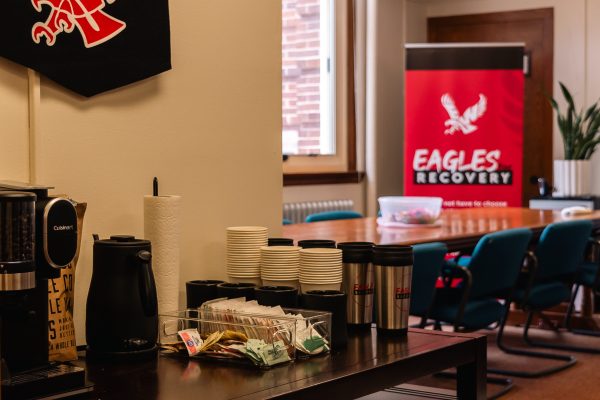I Ain’t Afraid of No Silicate Minerals
Asbestos a non-issue in dorms and classrooms
May 12, 2013
Bob Bossard, head of the EWU Insulation and Hazardous Material Abatement Office, said that all of the buildings on campus have some degree of a presence of asbestos.
However, Director of Facilities Maintenance Joe Swinyard said that the presence of asbestos does not necessarily imply the presence of danger or a need for concern. “There isn’t a problem,” said Bossard.
Asbestos is common in buildings constructed before the late 1970s, but EWU’s aging infrastructure continues to hold strong due to diligent maintenance and abatement teams led by Bossard and Swinyard.
The concern was sparked due to a community adviser in Dressler stating in an introductory meeting with new hall residents that residents should not touch the ceiling of their dorm rooms, as it is made with the toxic, naturally occurring silicate mineral asbestos. Indeed, the popcorn ceilings in Dressler and Pearce Halls do contain asbestos. The halls were built in the mid-1960s, a time of great popularity for the versatile building material.
Asbestos is only dangerous if exposed and disrupted. It is a friable substance, meaning it turns to a powder with little effort. Swinyard estimates that Pearce and Dressler’s ceilings have seen over 20 coats of paint over the decades, completely encapsulating the asbestos and neutralizing any danger for students.
“Is there a danger? No more than walking down the street,” Swinyard said.
All projects that disrupt a building’s structure, interior or exterior all start with a test for hazardous materials, including asbestos.
A student who has disrupted the ceiling of a residence hall in Pearce or Dressler to the point of exposing the original ceiling material, especially if part of the ceiling has broken off in any way, can take one of two routes to get the issue mitigated.
Swinyard recommends discussing the incident directly with your hall resident adviser immediately. Depending on the seriousness of the damage, Swinyard said it could be a simple cleanup that takes an hour or so, or a complete abatement process with special machines. You may even need to move out of the room temporarily if the damage is serious enough to require abatement.
Chief Housing Officer Josh Ashcroft recommends a different approach. Ashcroft suggests filling out a work order form at your hall’s front desk. Asbestos issues are given priority over other less dangerous problems. “Health and safety issues rise right to the top [of the work order list] and we work to get those addressed immediately,” said Ashcroft.
Click here for more information on the modern regulation of asbestos in America.






![Simmons said the biggest reasons for her success this year were “God, hard work, and trusting [her] coach and what she has planned.”](https://theeasterner.org/wp-content/uploads/2024/05/image1-1-1200x800.jpg)









